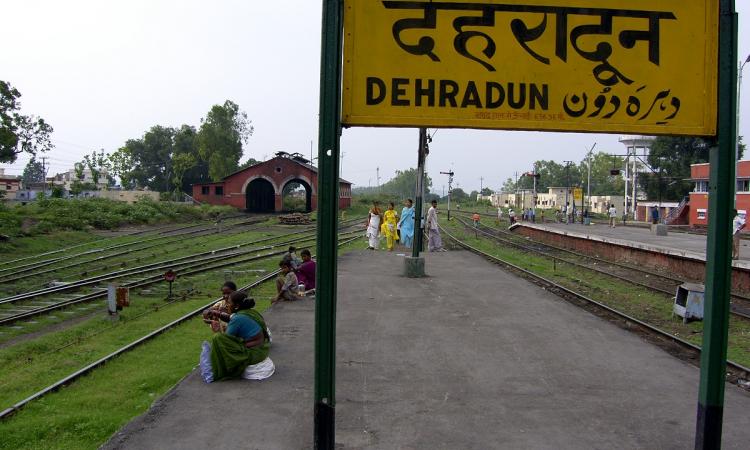
The Babur Nama mentions that the “the finest running water in Hindustan is that in the Dun.” The expanse of the valley and the ridgelines of the two major watersheds (Ganga and Yamnuna) passing through Dehradun, make it a unique ecosystem which can support a wide variety of plants and animals. This has changed today, and the garden town of Dehradun has travelled a long way or rather a wrong way since its birth.
An article titled 'Will Dehradun remain as the city of paradise' attempts to discuss the transformation of this one time “city of grey hair and green hedges” into a busy and polluted urban centre, and the factors that have strained the natural resource base to its limit.
Water-scarred present
Although it is one of India’s wettest places with an average of 2200 mm rainfall annually, water shortage especially in the summers is a common phenomenon. The water levels in most parts of the city have declined considerably over the last decade. The number of rainy days has reduced but the intensity of rain has increased causing a flood-like situation as was evident during the Uttarakhand flood disaster in June 2013. About 52% wastewater generated by the city is collected, but the rest of the sewage flows through open drains. The city has no Sewage Treatment Plant (STP), and its drainage is borne by the rivers Bindal and Rispana Rao.
What went wrong here?
'I wonder where the green grass went?
All buried under the new cement.
I wonder where the birds have flown?
They have gone to find another home.
What grows so fast before my eyes?
A garbage dump, a million flies.
Is this the place you celebrate?'
Dirge for Dehradun, by Ruskin Bond, 2006
Earlier, mostly spring and canal water--and not groundwater--was used by the people for domestic and irrigation purposes. Now, most of the canals have been either cemented or turned into receptacles for domestic waste and groundwater is playing a pivotal role supplying more than 80% of Doon valley's drinking water supply. The groundwater table has dipped by 8m and its pressure reduced by 50% [1]. Unabated construction of roads, increase in paved areas, cemented spaces in the form of houses, shopping complexes and encroachment in the river beds over the years has lead to increased run-off and reduced natural recharge of the aquifers.
The future?
Making a smart city by taking away thousands of acres of green land will not only disturb the ecological balance of Dehradun but of the entire state of Uttarakhand. Noted below are other possible effects:
-
- The city will further lose its pristine beauty.
- Dwindling groundwater resources will become a bigger concern.
- Rampant construction activities will lead to blocking of recharge areas and more runoff of rainwater, resulting in flood like situations.
- Overuse of groundwater will develop a negative pressure underground which will suck in pollutants from the surface and contaminate aquifers.
- Temperature of the city will further rise because of the urban Heat Island effect, caused by land use modifications/urban development.
- Loss of green cover will reduce the rate of evapo-transpiration leading to a lesser number of rainy days and more carbon dioxide in the air.
The article argues that what the city needs is proper planning and full implementation as per schedules for efficient use of available assets, resources and infrastructure, and a design that will transform it into a model city. Many plans have been drawn up for the city but none have been implemented so far. The city did not do much even under the JNNURM mission launched in 2005. Crores of money got used up for nothing and now the icing on the cake is the so called 'Smart City Plan' by UHUDA.
Suggestions that will help include the following:
-
- Develop Dehradun as a disaster-proof city as Uttarakhand is sitting on a shaky land which may any time be hit by an earthquake, as its is amongst the top 10 earthquake prone cities in India.
- Conserve the abundant downpour during the monsoon through green spaces.
- Avoid construction activities in the recharge area.
- Encourage eco-tourism.
- Build up green patches in the city that not only help recharge groundwater but also trap air pollutants.
The author, Anita Sharma, is with Peoples’ Science Institute, Dehradun. The views and opinions expressed in this article are those of the author, and do not necessarily reflect those of India Water Portal. Please download the complete article below.
References
[1]: Newspapers Amar Ujala, dated 22.1.16 & Dainik Jagran dated 11.12.15